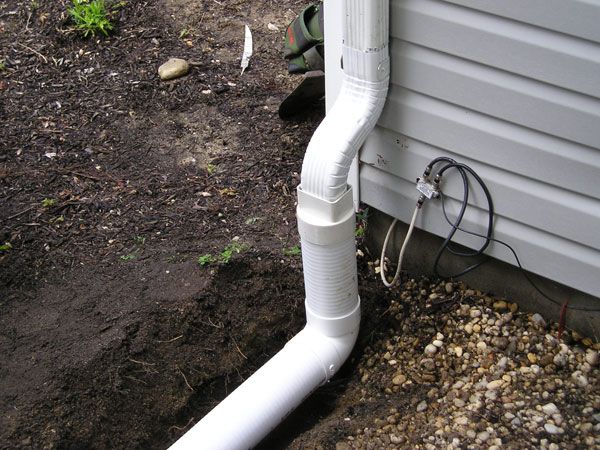A well-maintained drainage system is one of the cornerstones of a healthy and functional home. Often hidden from view, drainage systems are responsible for directing excess water away from your home, preventing costly water damage, and maintaining a dry, comfortable living environment. Yet, despite their importance, drainage and maintenance are frequently overlooked until problems arise. From flooding in the basement to water pooling around the foundation, drainage issues can lead to serious structural damage if not properly addressed. In this article, we will explore how improving your home’s drainage and committing to regular maintenance can not only safeguard your property but also enhance the overall livability of your space.
The Importance of Proper Drainage
Drainage systems are designed to channel water away from your home, protecting the foundation, landscaping, and interior from water damage. Whether through gutters, downspouts, French drains, or a properly graded yard, efficient drainage systems ensure that rainwater, runoff from storms, and even excess irrigation do not accumulate around your home. Standing water can weaken your foundation, promote the growth of mold and mildew, and even lead to structural instability. Without a functional drainage system, moisture problems can affect everything from the structural integrity of your home to the health of your family.
Good drainage is essential for a number of reasons:
-
Foundation Protection: Water accumulation around your foundation can cause the soil to expand and contract, leading to cracks and structural shifts. Over time, this can lead to severe foundation damage.
-
Mold and Mildew Prevention: Excess moisture can encourage the growth of mold, which can lead to health issues like respiratory problems and allergic reactions. A well-maintained drainage system reduces the likelihood of moisture buildup in your home.
-
Landscape Preservation: Pooling water in your yard can create boggy conditions, erode the soil, and damage plants. Proper drainage ensures that your garden thrives, rather than becoming a breeding ground for pests.
-
Basement Flooding: A compromised drainage system can allow water to seep into basements, resulting in flooding, dampness, and damage to personal belongings. An effective drainage solution will keep your basement dry and usable.
Signs That Your Drainage Needs Attention
Before you can improve your home’s drainage system, you first need to identify any existing issues. Here are a few common signs that your drainage system may require maintenance or improvement:
-
Pooling Water Around the Foundation: If you notice water accumulating around your home’s foundation, this is a clear sign that your drainage system isn’t working properly. Over time, this can lead to structural issues such as foundation cracking and shifting.
-
Frequent Basement Flooding: Damp spots, wet walls, or visible water in your basement are often indicative of drainage problems. When water is unable to flow away from the home, it can seep into the basement through cracks or porous walls.
-
Erosion of Landscaping: If your yard shows signs of erosion, it’s a sign that water is flowing improperly across your property, washing away soil and plants. This is often due to inadequate grading or improper downspout placement.
-
Clogged Gutters: Regularly clogged gutters are a sign that your home’s drainage system is not working as efficiently as it should. Overflowing gutters can cause water to spill over, damaging the exterior and allowing water to collect near the foundation.
-
Water Stains or Mold Growth: If you notice water stains on your ceilings, walls, or floors, or if you smell a musty odor, your home could be suffering from inadequate drainage. Mold growth, in particular, is a significant health concern and often results from excess moisture.
Improving Your Home’s Drainage System
Improving your home’s drainage system involves both preventive measures and the installation of more advanced solutions, depending on the severity of your existing problems. Here are several steps you can take to enhance your home’s drainage and reduce the risk of water damage:
1. Maintain Your Gutters and Downspouts
The simplest yet most important step in improving drainage is regular maintenance of your gutters and downspouts. These components play a crucial role in directing rainwater away from your home. Over time, leaves, debris, and dirt can accumulate in gutters, causing them to clog and overflow. This can lead to water spilling over the edges and pooling near your foundation. To prevent this, clean your gutters at least twice a year—more frequently if you have overhanging trees. Ensure that downspouts are clear and direct water away from your home, ideally at least 3 to 4 feet from the foundation.
2. Improve Yard Grading
Yard grading refers to the slope of the ground around your home. Ideally, your yard should slope away from the foundation to allow water to flow away from the structure. Over time, the ground can settle, causing low spots where water can pool. Regrading the yard is a more involved solution but can significantly improve drainage. By raising the ground near the foundation and creating a gentle slope, you can ensure that water drains away from your home. In some cases, professional landscaping services may be necessary to achieve the proper grade.
3. Install French Drains
French drains are a popular and effective solution for directing water away from problem areas in your yard. A French drain consists of a trench filled with gravel or rock, with a perforated pipe running through it to collect and redirect water. These drains are particularly useful in areas where water tends to pool, such as along the foundation, in basements, or in low-lying areas of the yard. French drains are relatively easy to install and can be customized to fit the specific needs of your property.
4. Install a Sump Pump
For homes that experience frequent basement flooding, a sump pump can be an invaluable tool. Sump pumps are installed in a pit in the basement floor, where they collect excess water that seeps into the space. When the water level in the pit rises, the pump is triggered to move the water out and away from the home. This is particularly useful in homes with high water tables or in areas prone to heavy rainfall. Regular maintenance of the sump pump is essential to ensure that it functions properly when needed most.
5. Check for and Repair Cracks in the Foundation
Foundation cracks can be a source of water seepage into your home. Inspect your foundation regularly for visible cracks, and address any issues as soon as possible. Small cracks can be sealed with a waterproof sealant, while larger cracks may require professional foundation repair. Preventing water from entering through the foundation is an essential part of any drainage improvement strategy.
6. Use a Rain Garden
A rain garden is a beautiful and environmentally friendly way to manage excess water in your yard. These gardens are designed to capture runoff from rainstorms and allow it to slowly absorb into the ground. By planting water-loving plants and creating depressions in your yard where water can collect, you can help improve the drainage around your home while enhancing your landscape. Rain gardens are particularly effective in areas where traditional drainage solutions are difficult to implement.
Regular Drainage Maintenance
Once you’ve improved your home’s drainage system, it’s essential to commit to ongoing maintenance. Regular inspections and maintenance will prevent small issues from escalating into major problems. Here are a few key maintenance tasks:
-
Clear Debris from Gutters: Regularly inspect and clean your gutters to prevent clogs and overflow.
-
Inspect French Drains: Ensure that the gravel and pipe in your French drains are free from obstructions, and check that the system is functioning properly.
-
Test the Sump Pump: Periodically test the sump pump by pouring water into the pit to ensure it’s working correctly.
-
Check for Signs of Water Damage: Regularly inspect your basement, foundation, and yard for any signs of water damage, mold, or pooling water.
Conclusion
A well-maintained drainage system is essential for protecting your home from water damage, maintaining the health of your landscape, and ensuring the overall longevity of your property. By regularly inspecting and improving your drainage, you can prevent costly repairs, protect your home’s foundation, and create a more pleasant living environment. Whether through simple steps like gutter cleaning or more advanced solutions such as French drains and sump pumps, taking a proactive approach to drainage and maintenance is a wise investment in the health of your home. Regular upkeep will not only keep your property dry but also help preserve its value for years to come.

